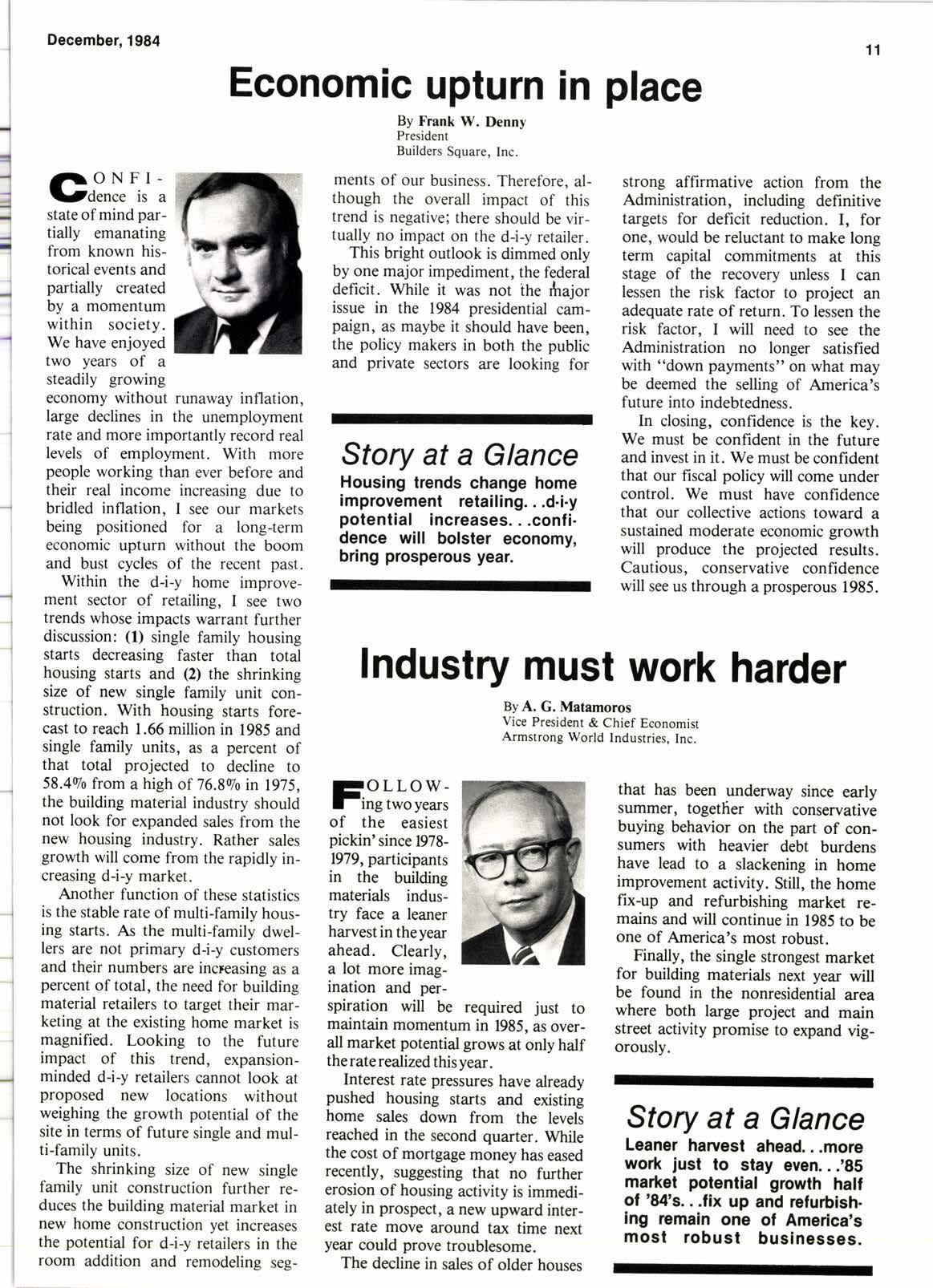
2 minute read
G.?"IiJ;
state of mind partially emanating from known historical events and partially created by a momentum within society. We have enjoyed two years of a steadily growing economy without runaway inflation, large declines in the unemployment rate and more importantly record real levels of employment. With more people working than ever before and their real income increasing due to bridled inflation. I see our markets being positioned for a long-term economic upturn without the boom and bust cycles of the recent past.
Within the d-i-y home improvement sector of retailing, I see two trends whose impacts warrant further discussion: (1) single family housing starts decreasing faster than total housing starts and (2) the shrinking size of new single family unit construction. With housing starts forecast to reach 1.66 million in 1985 and single family units, as a percent of that total projected to decline to 58.4t/o from a high of 76.80/o in 1975, the building material industry should not look for expanded sales from the new housing industry. Rather sales growth will come from the rapidly increasing d-i-y market.
Another function of these statistics is the stable rate of multi-family housing starts. As the multi-family dwellers are not primary d-i-y customers and their numbers are increasing as a percent of total, the need for building material retailers to target their marketing at the existing home market is magnified. Looking to the future impact of this trend, expansionminded d-i-y retailers cannot look at proposed new locations without weighing the growth potential of the site in terms of future single and multi-family units.
The shrinking size of new single family unit construction further reduces the building material market in new home construction yet increases the potential for d-i-y retailers in the room addition and remodeling seg- ments of our business. Therefore. although the overall impact of this trend is negative; there should be virtually no impact on the d-i-y retailer. This bright outlook is dimmed only by one major impediment, the federal deficit. While it was not the rhajor issue in the 1984 presidential campaign, as maybe it should have been, the policy makers in both the public and private sectors are looking for
Story at a Glance
Housing trends change home improvement retailing...d.i.y potential increases. .confi. dence will bolster economy, bring prosperous year.
strong affirmative action from the Administration, including definitive targets for deficit reduction. I, for one, would be reluctant to make long term capital commitments at this stage of the recovery unless I can lessen the risk factor to project an adequate rate of return. To lessen the risk factor, I will need to see the Administration no longer satisfied with "down payments" on what may be deemed the selling of America's future into indebtedness.
In closing, confidence is the key. We must be confident in the future and invest in it. We must be confident that our fiscal policy will come under control. We must have confidence that our collective actions toward a sustained moderate economic growth will produce the projected results. Cautious, conservative confidence will see us through a prosperous 1985.










